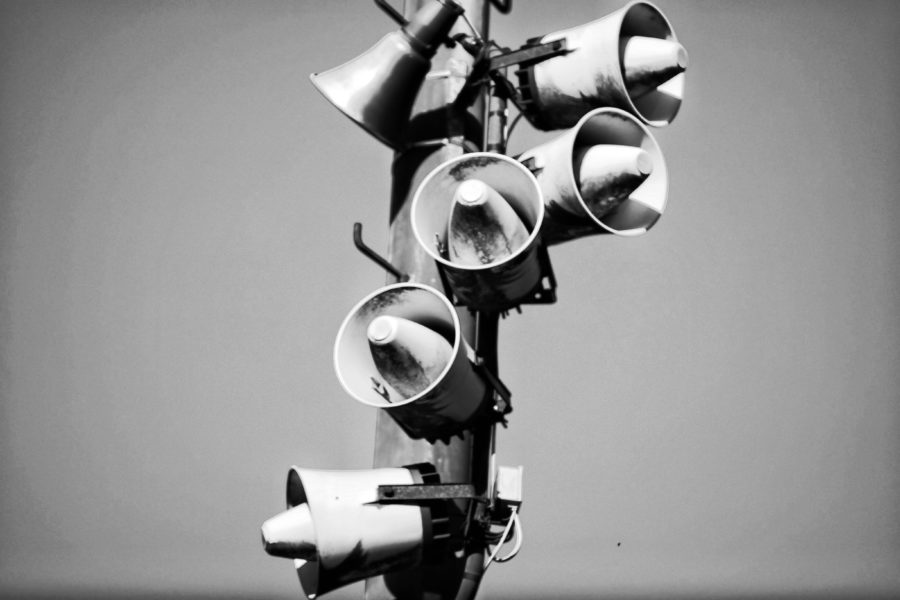In 1877, Lord Rayleigh, a notable British physicist and Nobel Prize winner, would conduct what is considered the earliest experiment in in active noise-cancellation. In his book The Theory of Sound, Vol. II, Rayleigh describes placing two ‘forks’ 10 yards a part with one fork’s vibration half the other. When utilizing the same pitch for each fork, the sets of emanating waves “neutralize one another.”
Another way of describing this is that the sound wave from one fork can cancel another fork’s sound wave; if one wave hits at it’s peak, while the other wave is at its base (a visual reference is provided below). This process of cancelling waves is called destructive interference and it is used in an array of commercial products today, the most common of which is active noise-canceling headphones.
 Fast forward half a century, Paul Lueg, a doctor of philosophy and medicine, invented the first application of active noise cancellation and patented it in 1934. This patent resembles the prolific modern day use of active noise cancellation, but unfortunately Paul wasn’t unable to implement his invention effectively, due to a lack of technology. It wasn’t until 1950 that this technology gain traction thanks to Harry Olsen, an inventor and engineer, who pioneered the commercial use of active noise cancellation in headphones for pilots.
Fast forward half a century, Paul Lueg, a doctor of philosophy and medicine, invented the first application of active noise cancellation and patented it in 1934. This patent resembles the prolific modern day use of active noise cancellation, but unfortunately Paul wasn’t unable to implement his invention effectively, due to a lack of technology. It wasn’t until 1950 that this technology gain traction thanks to Harry Olsen, an inventor and engineer, who pioneered the commercial use of active noise cancellation in headphones for pilots.
Since the use in 1950’s aviation, noise cancellation has taken off (pun intended) to be used in many aspects like construction and even cars to make them more fuel efficient. Bose, a premium headphone producer, popularized the use in commercial headphones, but now it’s difficult to find a brand that doesn’t offer the technology in it’s products.
Today people can be easily overwhelmed with the noise of day-to-day life, but the work done by the aforementioned pioneers, Rayleigh, Lueg, and Olsen — and many other unnamed — give the world pockets of silence from time to time, which deserves a quiet thanks.
